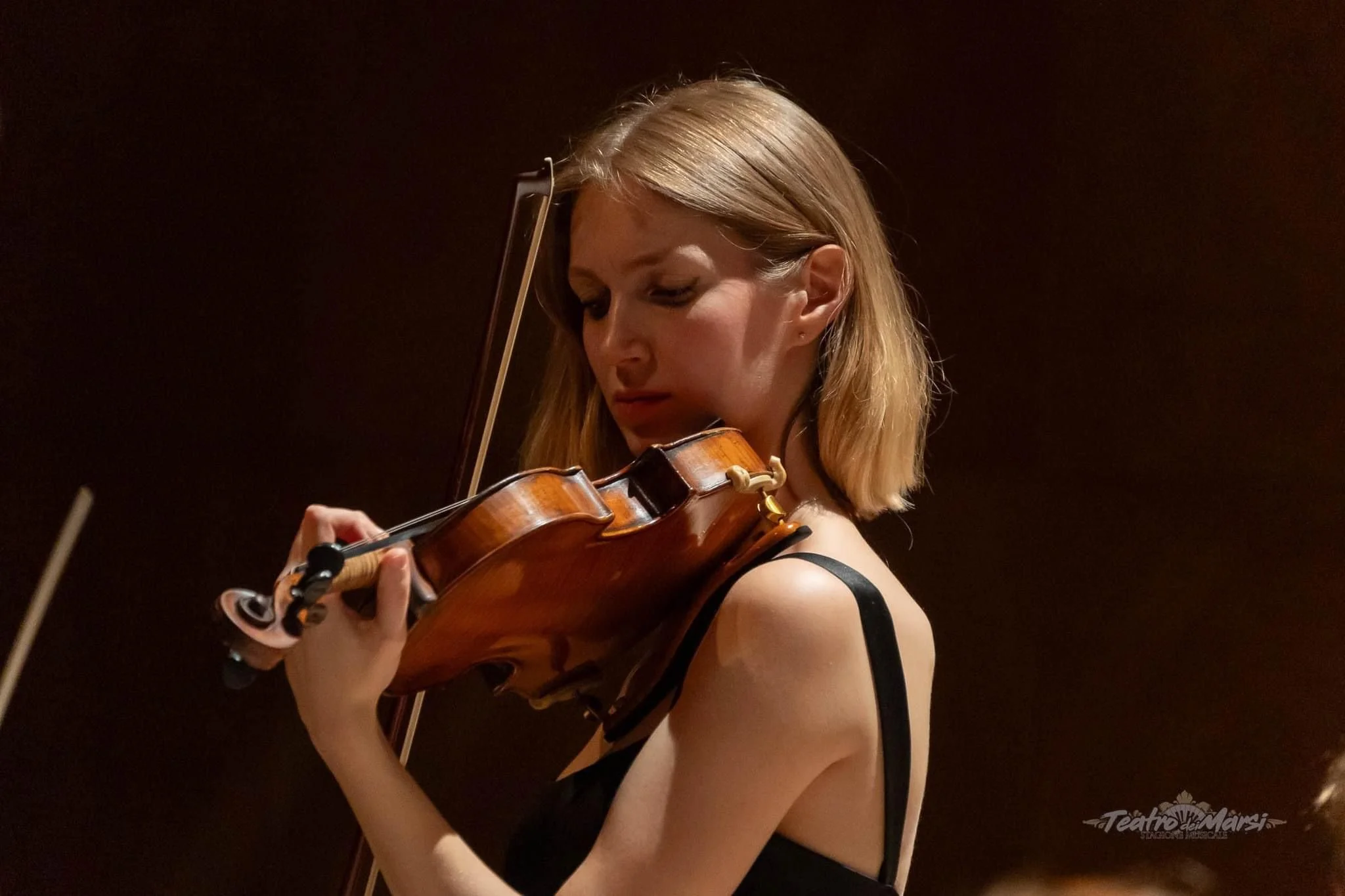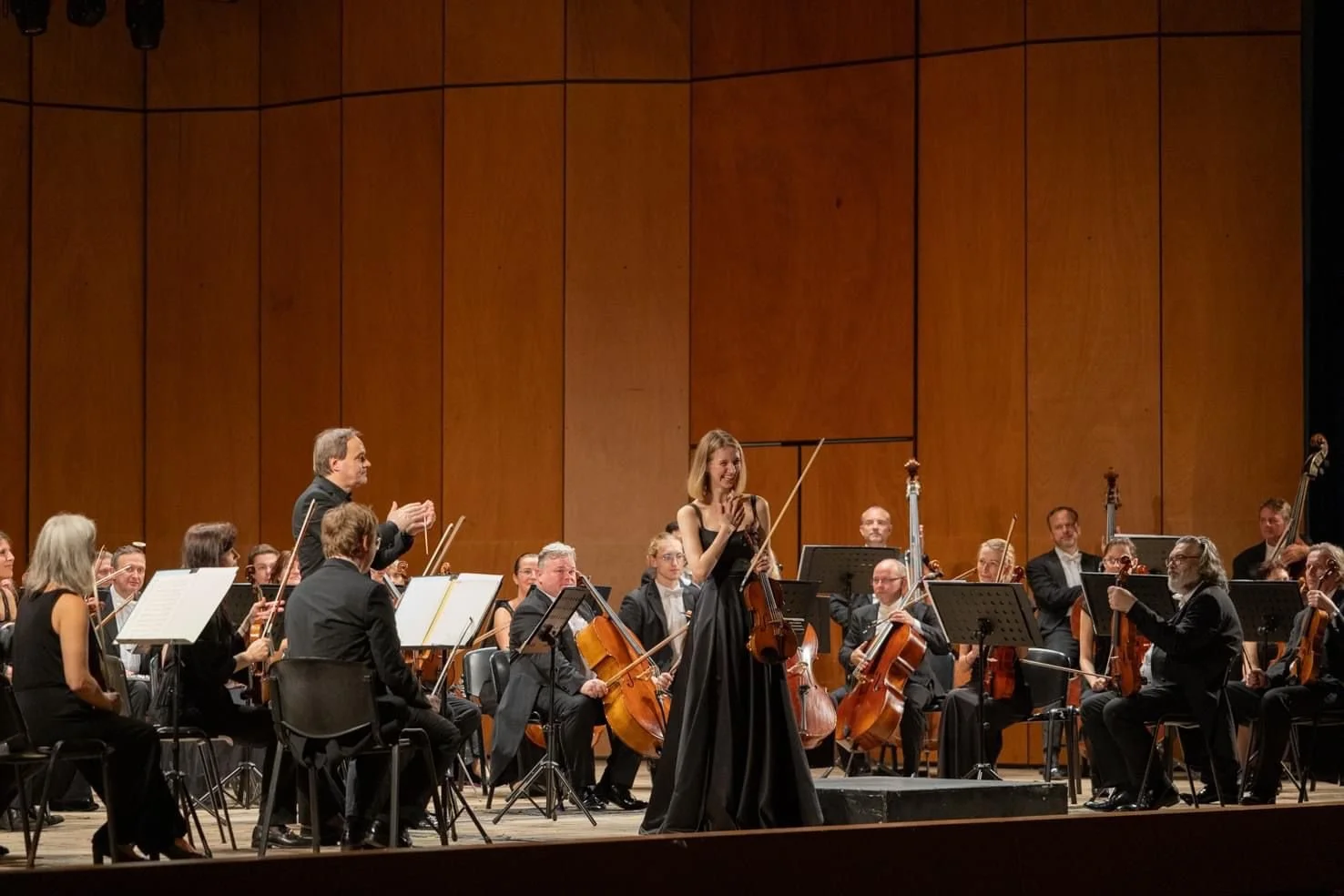Napoli: “The virtuosity of Giulia Rimonda”
Il giornale della musica
Review of one of Giulia's last concerts in Naples, by Salvatore Morra
“On Tuesday, October 22, Giulia Rimonda and Severoceská Filharmonie, a historic Czech ensemble from the city of Teplice, conducted by Alfonso Scarano were at the Acacia Theater in Naples for the season of the Alessandro Scarlatti Association. And each performance is monumental and virtuosic. The violinist from Turin presented a splendid layout by Max Bruch followed by Mendelssohn's celebrated Scottish symphony.
The orchestra debuts with the Overture in F minor, Op. 84 from Ludwig van Beethoven's Egmont, almost carefree, which after a few bars inspires a cantabile melody from the violins of suave lyricism. Delicate music that of Beethoven's, here dense and complex, intimate interpretation though for the more mellow moments, never really snappy, Beethoven models a moderate, fresh virtuosity where the light, lieder-like character retains the upper hand. Rimonda takes the stage. Limpidly crystalline themes emerge clear and light as everything is spoken by the violinist. It gets into full swing with Bruch's “Concerto in G minor for Violin and Orchestra No. 1, Op. 26.” More pages, more force. In a single gesture, Rimonda encapsulates the load of energy this instrument possesses. Remarkable are the vigorous arches in the sforzando and breathtaking scales, the picchettati. Warm, deep sound in the Adagio that without interruption comes from Vorspiel, where Rimonda achieved a more scratchy sound. In the finale, the young violinist needs no confirmation and launches into a tightrope walking dialogue with the orchestra. The audience is unanimously captivated by Kreisler's encore Recitativo and Scherzo. The bow bounces on the strings, but it is only after the arpeggios that Rimonda begins to dictate the rhythm one enters a melodic vortex, and it is all pure virtuosity.
Felix Mendelssohn Bartholdy's Symphony No. 3 in A minor Op. 56 opens the second part of the concert. The magnetic “L'allegro e Assai animato”, sober and without excess Scarano's conducting. Few accents and lyricism characterize the Adagio, reminiscent of the initial themes and moods, a continuous chase between the strings, with melodic overlaps, pressing themes and staccato strides up to the lively finale wrenching the great applause. The “furiant”, a Bohemian dance with which Antonin Dvořak's “Czech Suite in D major, Op. 39” ends is masterfully closing the concert; it seemed almost already an encore in the program.”

